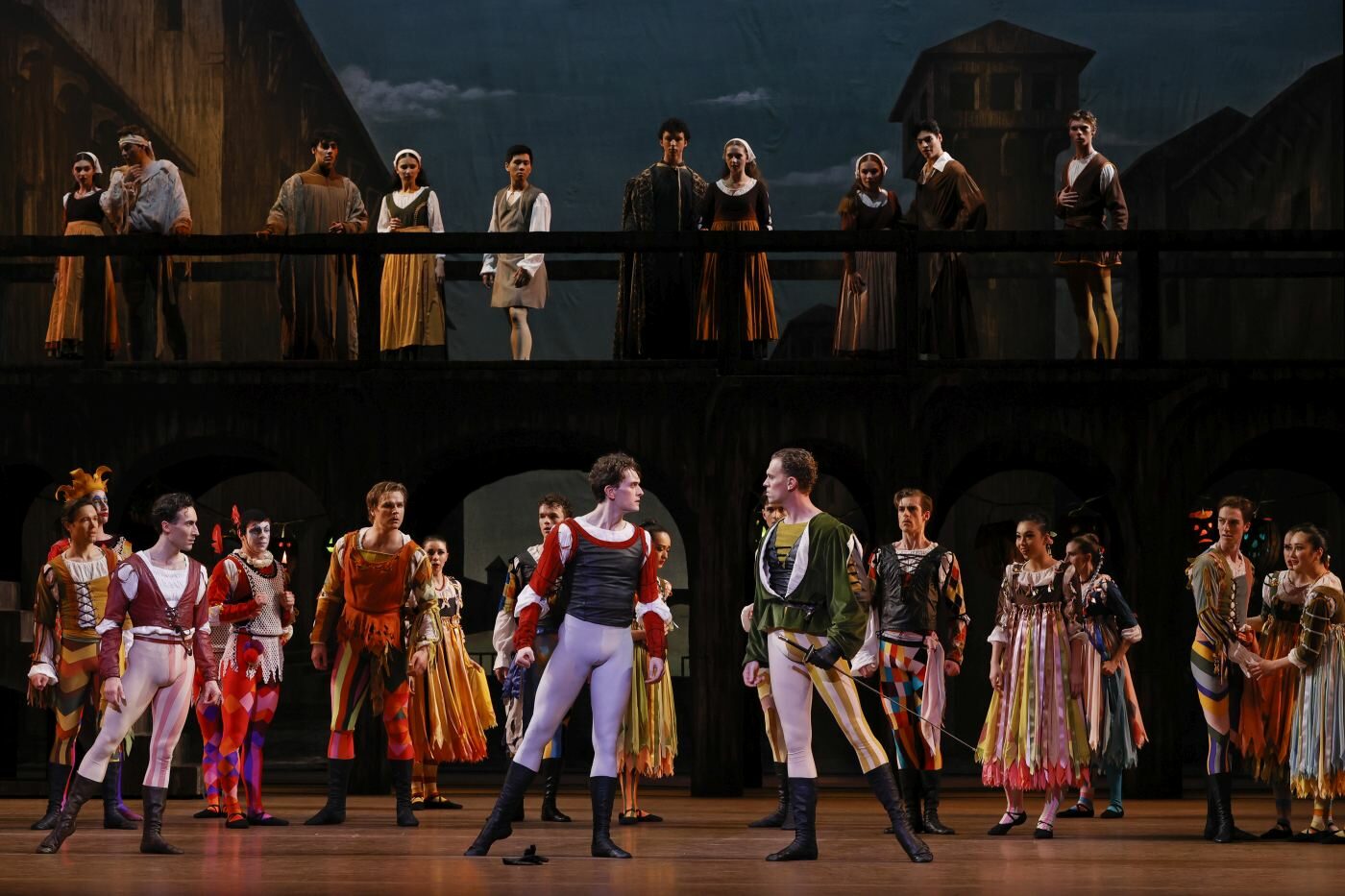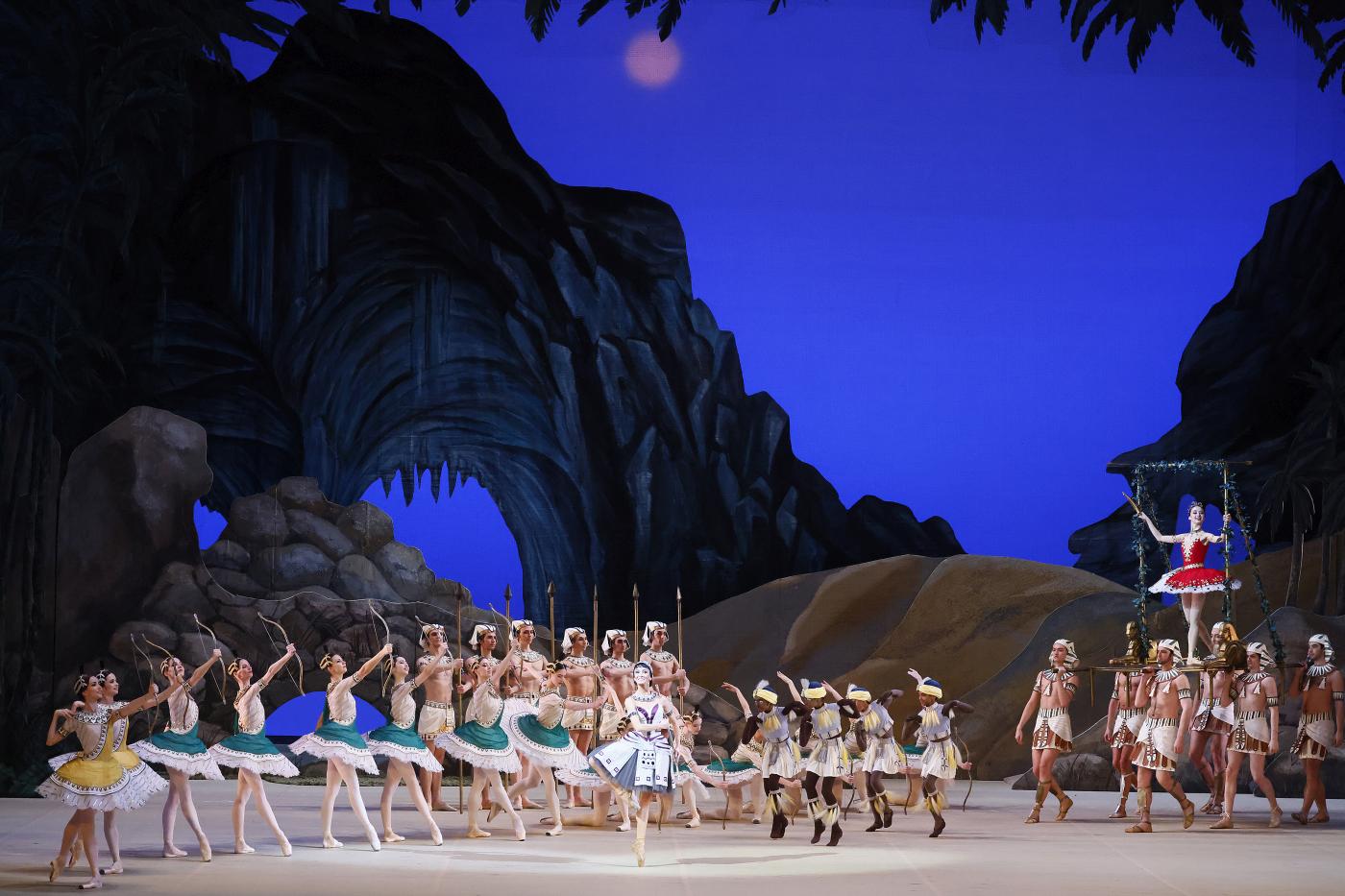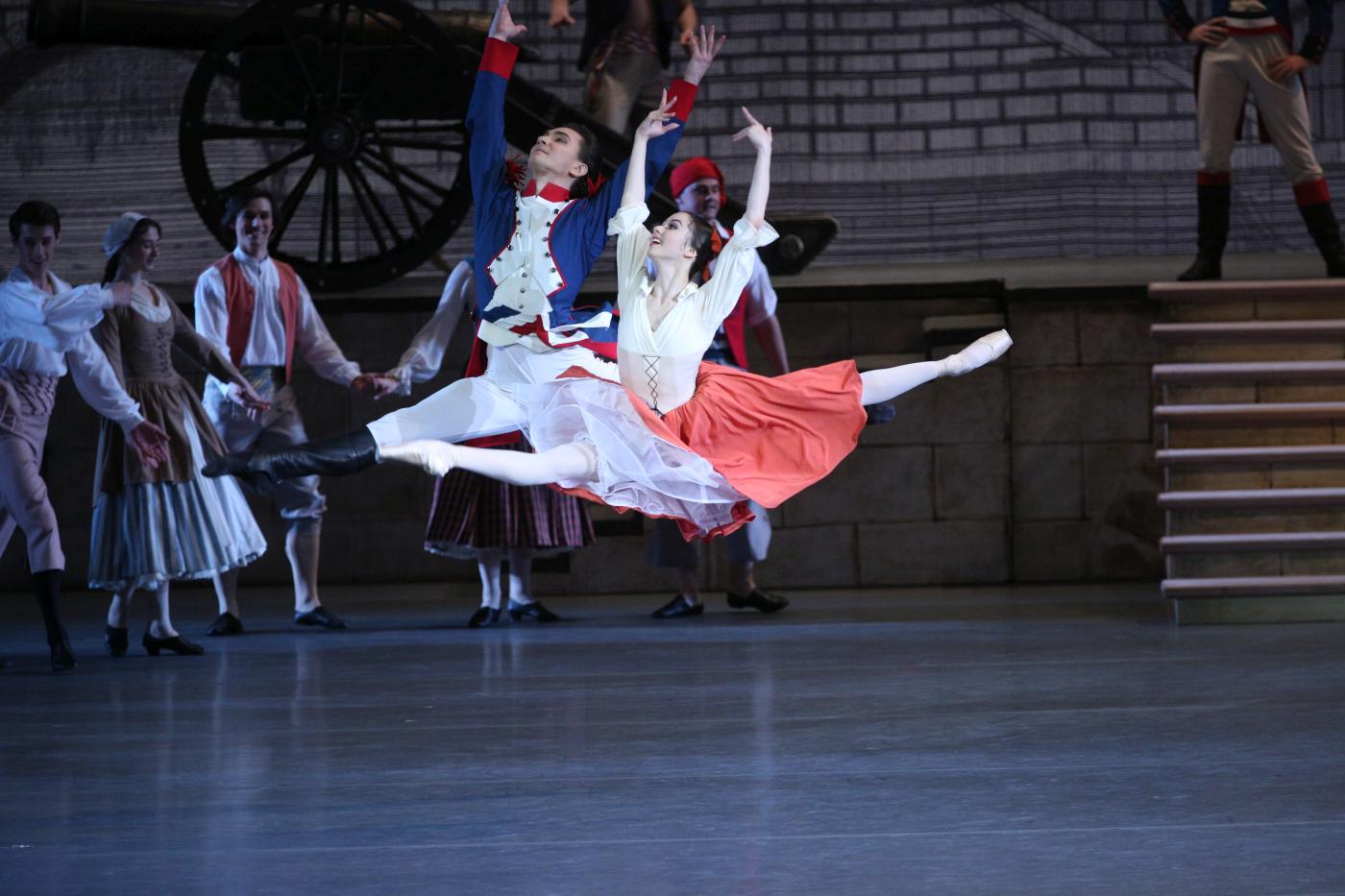“Master and Margarita”
Bolshoi Ballet
Bolshoi Theatre (New Stage)
Moscow, Russia
October 29, 2023 (matinee)
by Ilona Landgraf
Copyright © 2023 by Ilona Landgraf
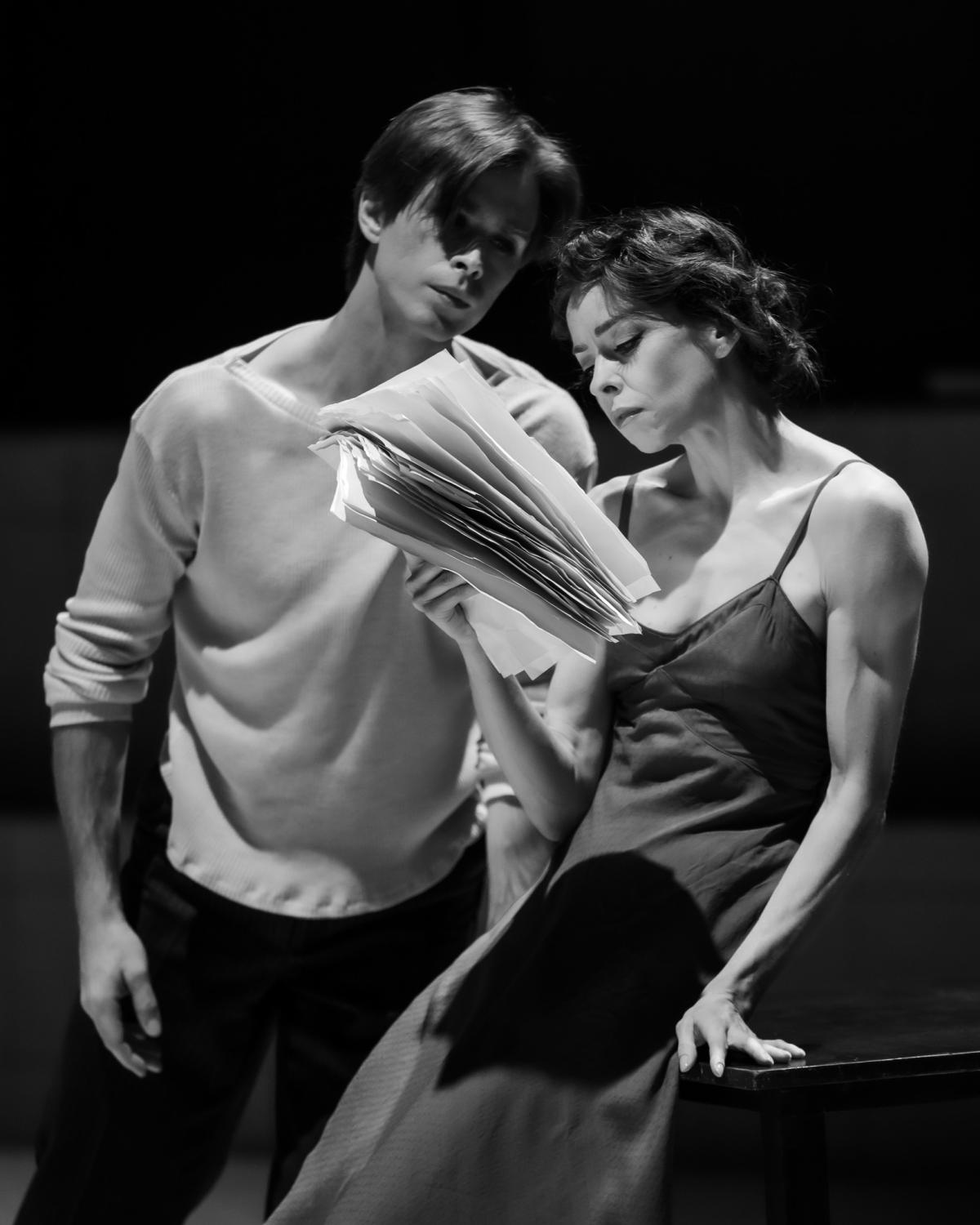 I was skeptical whether Edward Clug was the right choice to tackle Mikhail Bulgakov’s novel “The Master and Margarita”. A Russian choreographer seemed better equipped to adapt this landmark of Soviet literature for the ballet stage than a Romanian-born working in Maribor, Slovenia. Two years after its premiere at the Bolshoi Theatre, I was able to watch Clug’s “Master and Margarita” – and my reservations were proven thoroughly wrong. It’s a fabulous blend of entertainment and food for thought, brimful of metaphors and allusions. Yuri Possokhov, Clug’s Russian colleague, currently preparing a new piece for the Bolshoi, is full of appreciation for “Master and Margarita” as well. I met him at another performance where he told me that Clug understands the Russian soul perfectly well.
I was skeptical whether Edward Clug was the right choice to tackle Mikhail Bulgakov’s novel “The Master and Margarita”. A Russian choreographer seemed better equipped to adapt this landmark of Soviet literature for the ballet stage than a Romanian-born working in Maribor, Slovenia. Two years after its premiere at the Bolshoi Theatre, I was able to watch Clug’s “Master and Margarita” – and my reservations were proven thoroughly wrong. It’s a fabulous blend of entertainment and food for thought, brimful of metaphors and allusions. Yuri Possokhov, Clug’s Russian colleague, currently preparing a new piece for the Bolshoi, is full of appreciation for “Master and Margarita” as well. I met him at another performance where he told me that Clug understands the Russian soul perfectly well.
Interestingly, Clug, together with Christian Spuck (then artistic director of Zurich Ballet) intended to stage “Master and Margarita” in Zurich in 2015, but their plan was thwarted when the theater’s research revealed that ticket sales would be uncertain because the Zurich audience wasn’t familiar with Bulgakov’s novel. Destiny brought the Bolshoi Ballet’s artistic director Makhar Vaziev to the scene who decided to stage the piece in Moscow.
A lifetime could be spent exploring Bulgakov’s political and social satire and the biblical questions raised by the novel. In short “The Master and Margarita” (published only after Bulgakov’s death in 1940, first in an edited serial form in 1966/67 and uncensored in 1973) intertwines two plots: (1) the mayhem caused by the Satan (alias Professor Woland) and his entourage when visiting Moscow in the 1930s, and (2) the trial of Jesus of Nazareth in Jerusalem during Pontius Pilate’s governance. The connecting link is the Master, a Muscovite author (and Bulgakov’s alter ego) whose latest manuscript tells the Jerusalem plot. Margarita is the woman who loves him and – unlike Moscow’s critics – his work. (more…)
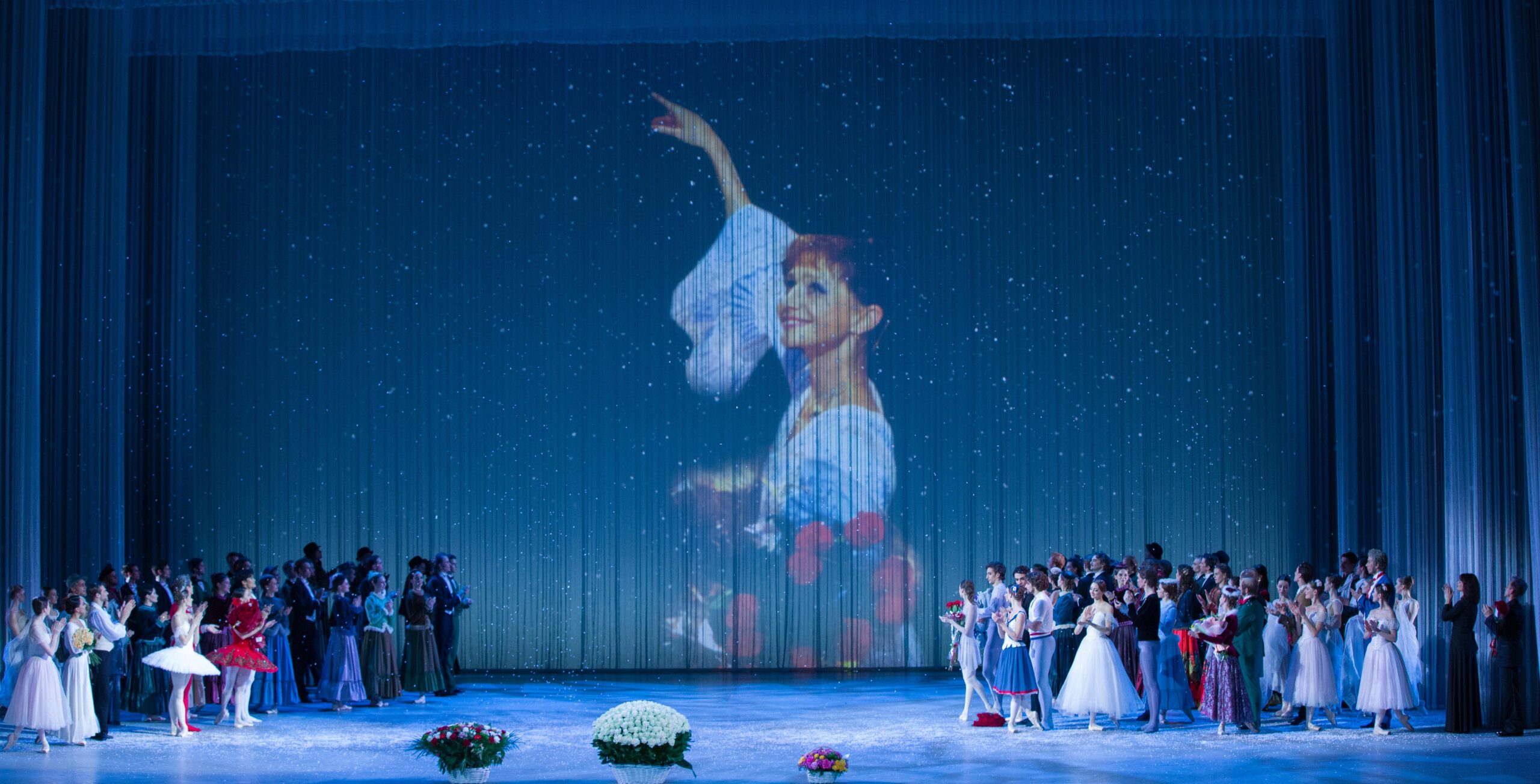 On February 1st, the Bolshoi Ballet’s prima ballerina, Ekaterina Maximova (1939-2009), would have celebrated her 85th birthday. A phenomenally successful (and multi-decorated) artist, Maximova’s fame reached far beyond Russia’s borders. After retiring from the stage of the Bolshoi in 1988, she continued to dance with other Russian and international companies—and sometimes even returned home to the Bolshoi. From 1990 on, Maximova worked as a coach, teacher, and member of several arts councils and committees. Every five years, Maximova’s husband, Vladimir Vasiliev, stages a gala at the Bolshoi in honor of his late wife. I was able to watch this year’s event on video. (more…)
On February 1st, the Bolshoi Ballet’s prima ballerina, Ekaterina Maximova (1939-2009), would have celebrated her 85th birthday. A phenomenally successful (and multi-decorated) artist, Maximova’s fame reached far beyond Russia’s borders. After retiring from the stage of the Bolshoi in 1988, she continued to dance with other Russian and international companies—and sometimes even returned home to the Bolshoi. From 1990 on, Maximova worked as a coach, teacher, and member of several arts councils and committees. Every five years, Maximova’s husband, Vladimir Vasiliev, stages a gala at the Bolshoi in honor of his late wife. I was able to watch this year’s event on video. (more…)